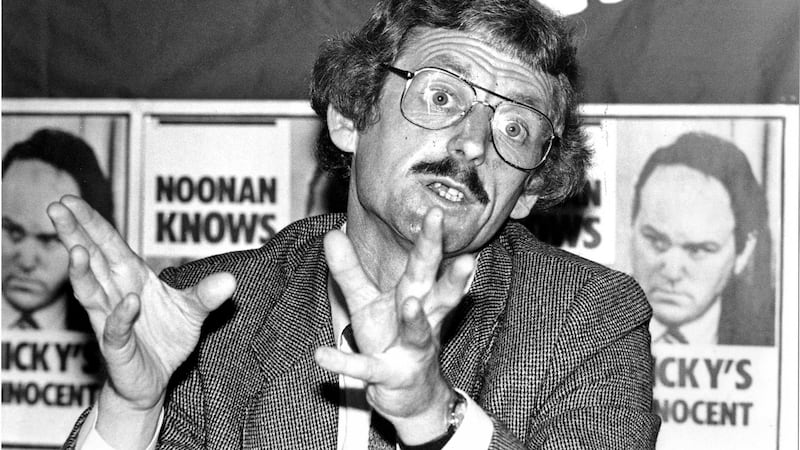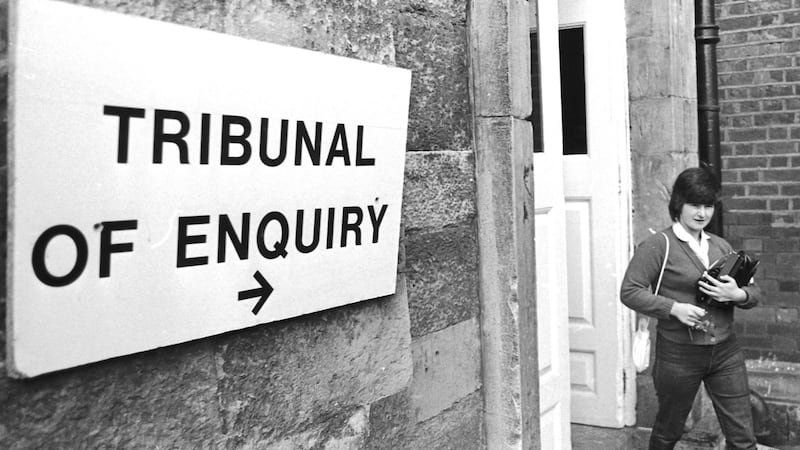Following the murder by the IRA of Christopher Ewart-Biggs in Sandyford on July 21st, 1976, a helmet was found near the scene of the explosion which killed the ambassador and an accompanying British civil servant, Judith Cooke.
The helmet was brought to the Garda forensic bureau in the Phoenix Park, where a fingerprint specialist in An Garda Síochána examined it. He found no finger-mark on the helmet.
Later, another Garda examined the helmet again. He found a finger mark on the helmet and identified this as the fingerprint of one of the murder suspects.
Subsequently, the original Garda who had examined the helmet viewed the chart and found that the supposed identification was false.
This was confirmed by a colleague, who concluded the mark was in fact made by the original Garda when storing the helmet.
However, the head of the fingerprint section insisted that the identification was correct and said he was prepared to say so in court. This caused deep disquiet among the Garda in the fingerprint section.
There was a subsequent inquiry into the affair headed by the head of the fingerprint unit in Scotland Yard.
He concluded that what was done in the Christopher Ewart-Biggs case “endangered the science of fingerprinting worldwide”.
The head of the fingerprint section was ultimately promoted and the two guards who argued the fingerprint was not the suspect’s were moved out of the fingerprint unit and were effectively demoted.
In 1977 Nicky Kelly, Osgur Breathnach and Brian McNally, members of the then newly formed Irish Socialist Republican Party (IRSP) were accused and convicted of a £200,000 train robbery in Sallins, Co Kildare on March 31st, 1976.
The only evidence against them was confessions they made while in Garda custody and while in that custody there was clear evidence that they had suffered significant injuries.

More that 20 gardaí gave evidence in almost identical phraseology that the accused were not assaulted in custody and that the confessions were voluntary.
Eventually Osgur Breathnach and Brian McNally were acquitted on appeal and, much later, Nicky Kelly was released from prison and granted a presidential pardon on April 29th, 1992. Mary Robinson was president at the time.
Illegal organisations
This amounted to an acknowledgement by the State that Nicky Kelly was convicted on unsound evidence.
Not a single Garda who gave evidence in that case was ever disciplined in that connection or ever charged with perjury.
Lawyers, acting for accused persons associated with illegal organisations, stated repeatedly during that time – ie in the 1970s and 1980s – that Garda perjury was a regular feature of such cases and, later, became almost a constant feature of many criminal trials, whether subversive related or not.
At no time was there any inquiry into this or was any Garda disciplined within the force in that connection.
The dysfunctionality of An Garda Síochána has been evident for a long time
In 1985 a low-level IRA informer, John Corcoran of Cork, was murdered in Kerry by the IRA.
Subsequently, a high-level Garda informer, Sean O’Callaghan, stated that he personally had told his Garda handler of the imminent murder of John Corcoran and of the location in Kerry where John Corcoran was being held by the IRA.
Sean O'Callaghan in interviews with the Kerryman and The Sunday Times stated that he personally had fired the shot that killed John Corcoran.
It is true that Sean O’Callaghan was a self-acknowledged liar and that anything he asserted needed to be tested.
But his own admission that he himself had murdered John Corcoran was surely a sufficient basis for charging him with the murder.
Also, his assertion that he had informed gardaí in advance of the imminent atrocity deserved a thorough independent investigation.
He was never charged with the murder or of any act related to the murder, and there was never an independent investigation of the clear allegation that gardaí allowed a citizen of this State to be murdered so that the identification by the IRA of a prized informer would not be exposed or risked being exposed.
In 1984 a baby’s body was found on the beach at Cahirciveen.
It was clear it had been stabbed to death. Subsequently, a young Kerry woman confessed to gardaí that she had given birth to this baby, that she had killed the baby by stabbing, and that she was supported in this enterprise by her mother and sister, who also made statements to gardaí accepting this.
Blood tests showed that she could not have been mother of the stabbed baby.

A tribunal of inquiry, chaired by a High Court judge, failed to establish how the family of this girl gave gardaí false self-incriminating statements. No action was ever taken against any of the gardaí involved in this.
Widespread falsification
The dysfunctionality of An Garda Síochána has been evident for a long time and probably was worsened by the belief during the course of the IRA campaign that they could do what they liked and swear as true whatever they concocted.
The widespread falsification of breath tests and the failure to issue nearly 150,000 fixed charge notices, leading to the wrongful conviction on driving charges of around 14,000 people is small fry and not at all surprising.
The treatment of whistleblower Maurice McCabe certainly is not small fry and it is incomprehensible that Nóirín O’Sullivan has not been removed from her office if only based on what emerged in respect of Maurice McCabe at the O’Higgins inquiry.
Unfortunately, this weak government and even weaker Minister for Justice do not have the gumption to do what is necessary with our police force – civilianise most of the senior ranks, appoint a capable and robust civilian as Garda Commissioner and give stronger powers to the Police Authority, the Garda Inspector and ombudsman. Instead we will get yet another pointless review.













